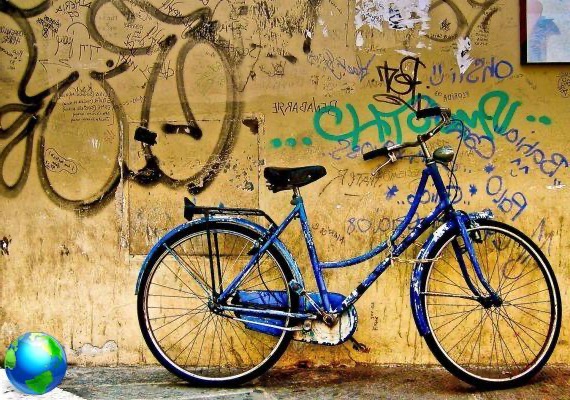
Go around the streets of Florence by bicycle it is a low cost and healthy way to appreciate the beauty of the city. Of course the pavements of the historic center do not help, but the area is for the most part pedestrianized and in the surroundings they start cycle pathsi that will make you reach more peripheral areas in a few minutes. As in all large urban centers, thefts are very frequent, but a lot is invested in the tourism cycle: in addition to exclusive routes for two wheels under continuous construction, there is also a service of bike sharing, which allows the public use of bicycles, upon registration, to be taken from the special columns, located above all in the Oltrarno.
The itineraries that wind along the Arno river they are the most classic and most comfortable: almost flat and with a moderate mileage. There are short interruptions in the cycle path, but losing one's orientation is impossible, because the reference remains the Arno. Going south, you reach the Anconella Park, where the Matte Houses of the Second World War can still be visited and in good condition.
If you head in the opposite direction, however, you get to Cascine Park in a short time. The green area is entirely cycleable, thanks to internal paths and if you want to continue for about ten kilometers, your destination will be the beautiful Renai di Signa Park, seventy hectares of lakes and islets. Declared a "Free State", at Renai you can spend a day on the pretty beach with swimming pool, devote yourself to bird watching in the WWF reserve, rent a rowing boat, play a game of soccer or climb on the special 8-meter wall or dedicate yourself to the skateboard in the reserved space.
Another short journey, about 10 minutes and not too demanding, is the one that leads from Piazzale Ferrucci to Piazzale Michelangelo, the designer terrace on Florence. In this case, a bit of a climb is to be taken into account, but the view that awaits you upon arrival will repay you for any effort. You can also deviate the route and from the square turn towards the interior of the San Niccolò district, until you reach the Rose Garden first and then the Forte Belvedere. In this case, however, the roads are open to traffic and a little narrow.
By increasing in difficulty, we come to Fiesole: starting from the Cure, the slopes to be tackled are not excessive, but if you want to test your sporting endurance, the route that passes through Pian di Mugnone will put you to the test. Personally I have never tried them, but the roads that lead to Fiesole are all full of charm and upon your arrival the town will welcome you for a stop under the banner of art and breathtaking views.
If your physical prowess is equal to mine, but you don't want to give up the beauty of the Florentine lands, I recommend a slow itinerary in the Castello area. Wandering through the country lanes, framed by low walls, you can peek among the numerous stately villas in the surroundings. First of all, the Medici Villa, whose gardens, which can be visited, are second only to Boboli: artificial caves follow one another with lemon groves in a festive splendor, typical of the Florentine family. Seat of the Accademia della Crusca, the building is of a sober elegance and is not far from another property of the Medici family, the Petraia, located in a panoramic position in the middle of the green. To reach it you can simply follow the turret that emerges from the trees from the beginning of the street, where the Villa Corsini is located, home to a museum on antiquity. If you continue down a side street you will then arrive at Villa La Quiete, the splendid seat of a historic order of religious, which today unfortunately opens to the public only for special events.


























